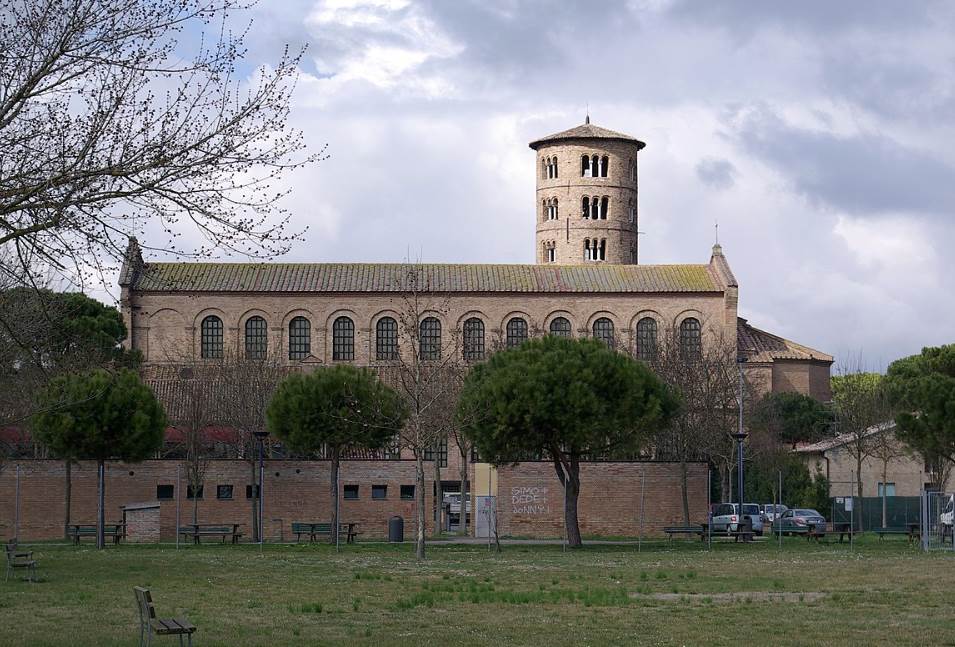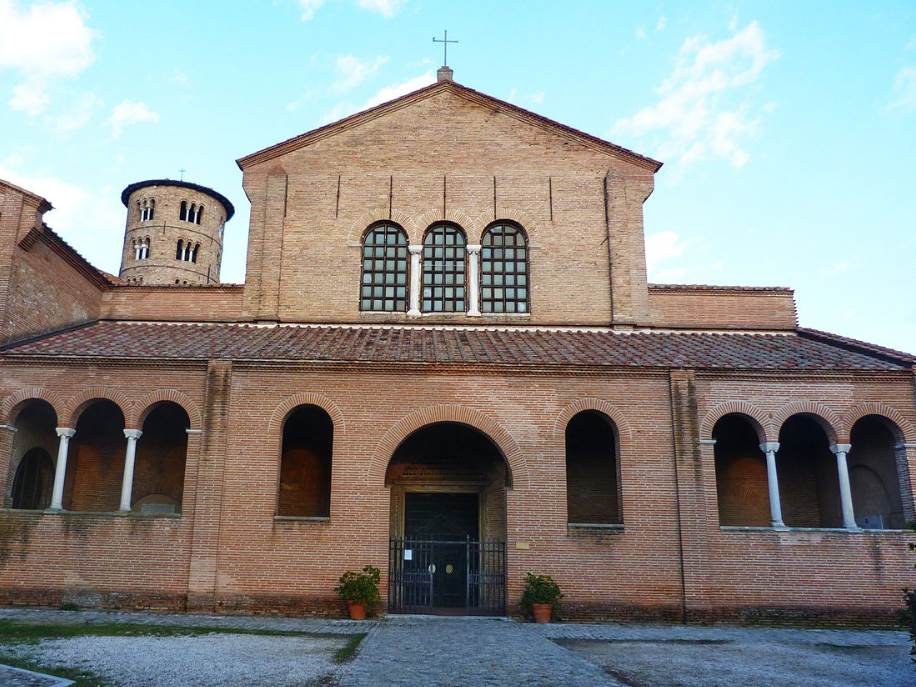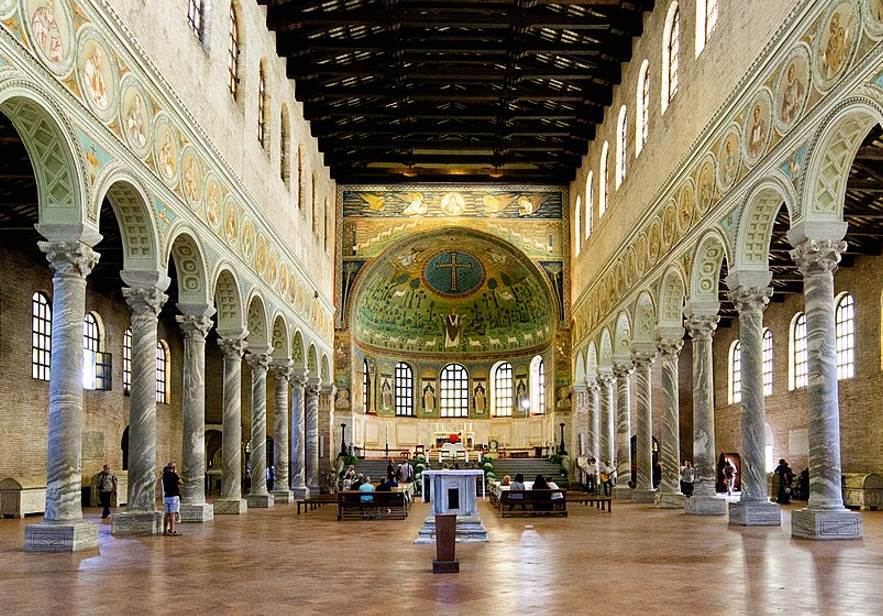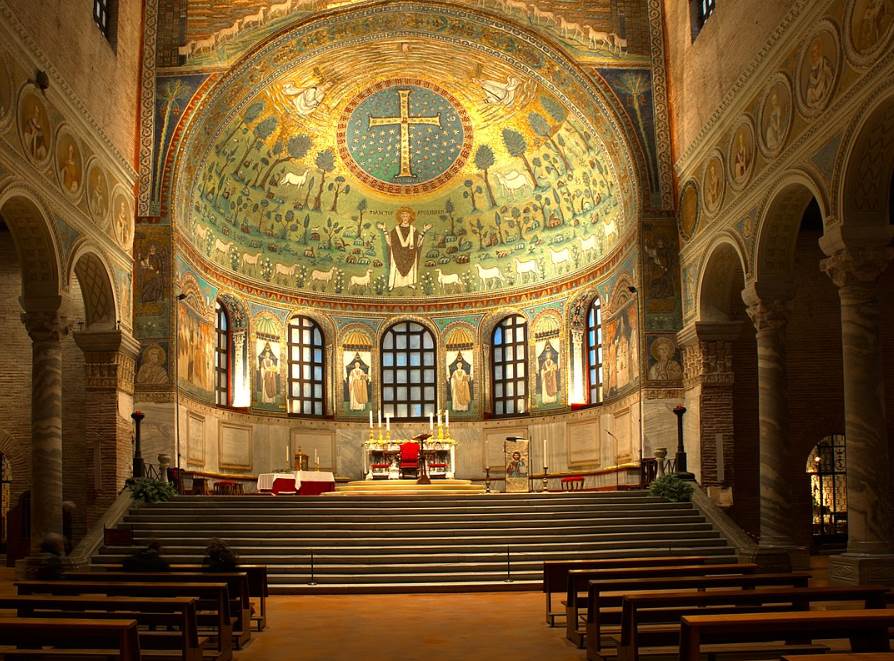You will hardly find a better place to admire Byzantine architecture than in this city in the northeast of Italy.
Ravenna was a major port city during the Roman Empire and it even became the capital city of the Western Roman Empire in the year 408.
About a century later, some major Christian churches were constructed here, several of which remain intact today.
In this article, we’ll take a closer look at some of the most interesting facts about the Basilica of Sant’Apollinare in Classe, one of the finest examples of a Byzantine building in the world.
1. The Basilica of Sant’Apollinare in Classe is located just southeast of Ravenna
The Basilica of Sant’Apollinare in Classe is a Byzantine building located in the small town of Classe about 4 kilometers (2.5 miles) southeast of Ravenna.
It’s impossible to notice today but this place was actually a port city in ancient times. “Classe” means “fleet” because the port was used as a military port by the Roman army for centuries.
For 500 years, this port city on the Adriatic Coast was bustling with soldiers and sailors. Later, Classe became an important commercial port for the city of Ravenna.
Today, the coastline has moved about 9 kilometers (5.6 miles) to the east so there’s no port in this small town today. The foundations of the ancient port are still visible.

2. Construction of the church began in the early 6th century
Ravenna became the most important city in the Western Roman Empire in the year 408, the year it became its capital city.
It continued to hold this strong position as it became the capital of the Ostrogothic Kingdom and the main city of the Byzantine Exarchate of Ravenna.
During this transition between the Ostrogothic Kingdom and the Byzantine Empire (the city was unconquered by the Byzantine Empire in 540), many important buildings were constructed here.
The first stone of the Basilica of Sant’Apollinare in Classe was laid in the early 6th century, right next to an ancient Christian cemetery.

3. It was consecrated just 3 years after another famous Byzantine church
The basilica is quite big and the workers didn’t have modern tools. That’s why the construction of these types of buildings took multiple decades to complete.
Another major Byzantine building in the heart of Ravenna, the Basilica of San Vitale, was consecrated in 546.
The Basilica of Sant’Apollinare in Classe was completed around the same time as it was consecrated on May 9, 549 by local Bishop Maximian.

4. The church was dedicated to the first Bishop of Ravenna and Classe
Christianity became the main religion in the Roman Empire following the conversion of Roman Emperor Constantine the Great in the early 4th century A.D.
This was the time that ancient Roman Temples were being transformed into churches and new basilicas were being constructed.
The basilica in Classe was dedicated to Apollinaris of Ravenna, the first bishop of Ravenna. His story is rather obscure but it’s believed that he might have been one of the first 72 disciples of Christ.
What’s more certain is that he was a disciple of Saint Peter who made him the Bishop of Ravenna somewhen during the reign of the 4th Roman Emperor Claudius between 41 and 54 A.D.

5. Some later additions were made to the exterior of the church
The exterior of the building has a rather simple design and features a façade with 3 windows near the top. Only the core building dates back to the 6th century.
Three additions were made in later periods, including:
- A building just next to the Basilica.
- The narthex in front of the entrance.
- The free-standing round bell tower was completed in the 9th century.

6. The interior features a typical Byzantine basilica design
The main building of the basilica indicates how the interior is structured. The design is typical of Byzantine basilicas as it features a nave and two side aisles.
The nave is lined with 24 marble columns that feature carved capitals. These depict acanthus leaves that appear to be blowing in the wind, a remarkable and uncommon design.
The side walls of the building’s interior feature faded frescoes that date back to the 18th century.
These once featured mosaics but these were likely removed following the Fall of the Eastern Roman Empire in the 15th century.

7. The apse and triumphal arch feature original 6th-century mosaics
Although the mosaics that decorated the sidewalls have been removed, this is remarkably not the case for the apse and triumphal arch at the end of the basilica.
These are great examples of the typical 6th-century mosaics that can be found in many parts of the Byzantine Empire.
The upper section features the Hands of God, the face of Christ in a Starry Sky, and figures that represent Elijah and Moses.
The lower section features the figure of Saint Apollinaris in a natural landscape full of rocks, trees, greenery, and 12 lambs as he is praying to God.

8. It became a UNESCO World Heritage along with 7 other ancient monuments
The Basilica of Sant’Apollinare in Classe is a great example of Byzantine architecture that also features the typical mosaic art that was popular in the Byzantine Empire.
It has been added to the list of UNESCO World Heritage Sites in 1996, together with 7 other monuments in Ravenna that were constructed in the 5th and 6th centuries. These are:
- Mausoleum of Galla Placidia
- Neonian Baptistery
- Basilica of Sant’Apollinare Nuovo
- Arian Baptistery,
- Archiepiscopal Chapel
- Mausoleum of Theodoric
- Church of San Vitale
This is the greatest collection of Byzantine architecture and art outside of Istanbul which makes Ravenna a lovely city to visit.


